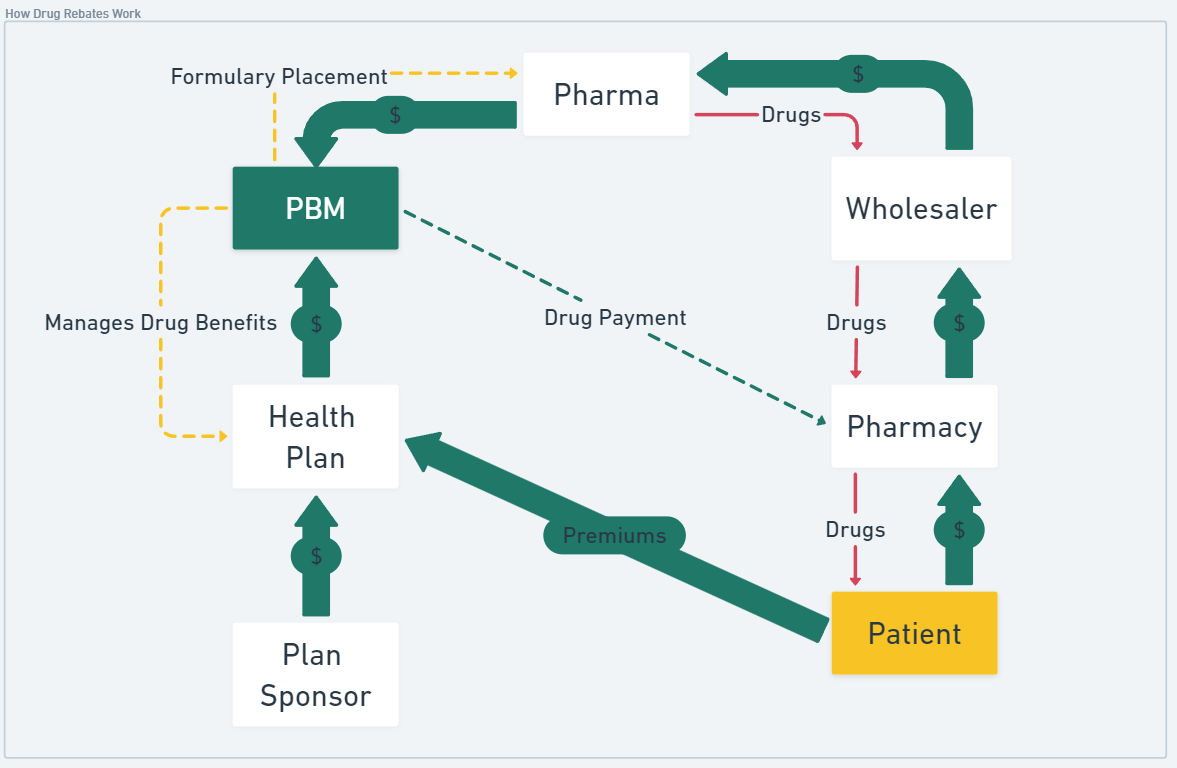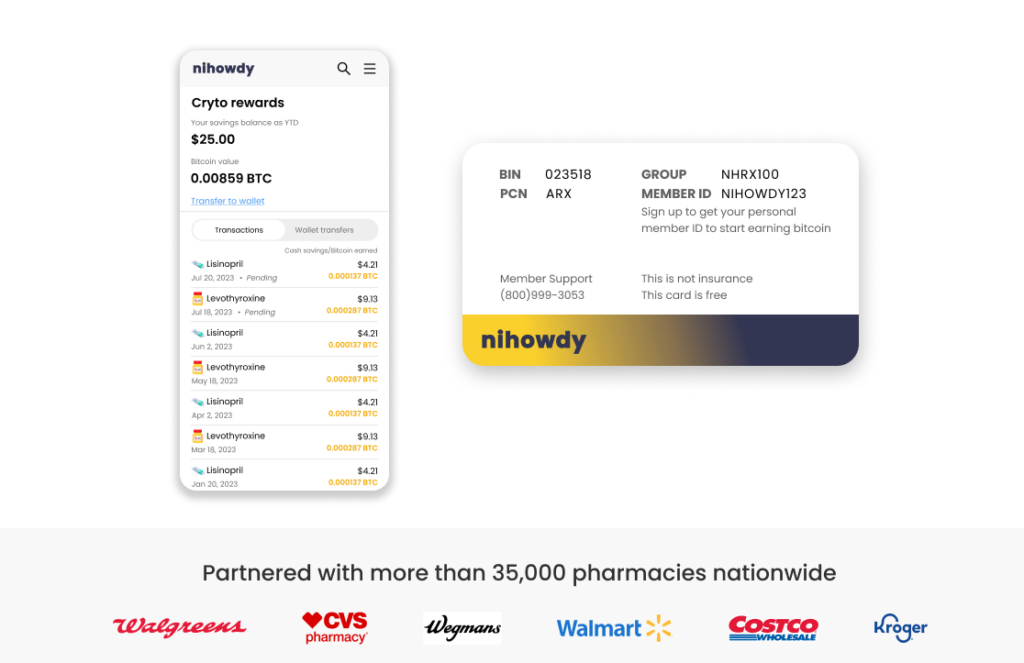Drug Rebates in the Pharmaceutical Industry: An Overview


Drug rebates are crucial in the pharmaceutical industry, influencing drug pricing and market access. In this article, we will explore how drug rebates function within the industry and provide an overview of key terms and definitions.
I. Introduction
Like every industry, there are incentives for vendors and consumers to collaborate. Financial incentives, such as rebates, are commonly used to promote certain behaviors and increase sales volume. In the pharmaceutical industry, drug rebates reduce the overall cost of prescription drugs and improve their affordability for patients. This article aims to shed light on the intricacies of drug rebates and their significance within the pharmaceutical ecosystem.
II. The Psychology behind ‘Rebates’
To understand drug rebates, it’s essential to delve into their psychology. Rebates refer to financial transactions that involve a negotiated discount or reimbursement for a portion of the cost of prescription drugs. The psychology behind offering rebates is to promote customer loyalty, increase sales volume, or encourage customers to take specific actions.
III. Drug Rebates: Overview and Importance in the Pharmaceutical Industry
A. What Are Drug Rebates?
Drug rebates are financial transactions between pharmaceutical manufacturers and other entities, such as pharmacy benefit managers (PBMs) and health insurance companies. These transactions involve negotiated discounts or reimbursements for prescription drugs to reduce their overall cost.
B. The Importance of Drug Rebates in the Pharmaceutical Industry
Drug rebates are vital in the pharmaceutical industry, influencing drug pricing and market access. They enable manufacturers to negotiate pricing agreements with PBMs and health insurance companies, ensuring their medications are included in formularies and accessible to patients. Additionally, drug rebates can impact pharmaceutical companies’ profitability, the affordability of medications for patients, and the overall dynamics of the healthcare system.
IV. The Basics of Drug Rebates
To comprehend how drug rebates function, it’s crucial to grasp the fundamentals of pharmaceutical pricing and the involvement of various stakeholders.
A. Explanation of Pharmaceutical Pricing
The price of a prescription drug is typically determined by the manufacturer, considering factors such as research and development costs, production expenses, and desired profit margins. Research and development are significant in bringing new drugs to market, but the process is complex and costly. Out of numerous drugs in a company’s portfolio, only a few successfully make it to market after extensive research and rigorous approval processes. Once a drug receives approval from the FDA, the manufacturer holds a patent for a certain period, during which they have exclusive rights to sell it. However, when the patent expires, generic versions of the drug become available, leading to increased competition and reduced pricing.
B. Role of Drug Manufacturers, PBMs, and Plan Sponsors
Drug manufacturers develop and produce medications, which they sell to wholesalers, distributors, and pharmacies. PBMs act as intermediaries between drug manufacturers and health plans, negotiating pricing and rebate agreements for insurers. Health plans cover medical services, including prescription drugs, and negotiate rebate agreements with manufacturers. Together, these stakeholders form a complex network that shapes the pricing and accessibility of prescription medications.
C. Purpose of Drug Rebates
The primary purpose of drug rebates is to incentivize the inclusion of specific medications in insurance formularies. Manufacturers offer PBMs, and health insurance companies rebate to incentivize them to promote and provide coverage for their drugs. These rebates can lead to preferred placement on formularies and potentially lower out-of-pocket patient costs. Rebates also serve as a way for manufacturers to increase sales and promote other products within their portfolio.
V. Types of Drug Rebates
Two main rebates exist within the drug rebate system: point-of-sale rebates and retrospective rebates.
A: Retrospective Rebates**
Retrospective rebates are based on the aggregated sales of medications over a defined period, usually a quarter or a year. Manufacturers provide rebates to PBMs and health insurance companies based on their drugs’ total volume or market share. These rebates are typically paid after the drugs have been dispensed to patients and are not visible to the everyday customer.
B: Point-of-Sale Rebates
Point-of-sale rebates, or upfront rebates, are applied directly at the time of purchase. When a patient buys a medication, the rebate amount is deducted from the total cost at the pharmacy counter, providing immediate cost savings for patients. Point-of-Sale Rebates are less frequently used.
VI. Key Players in the Drug Rebate System
Several key players participate in the drug rebate system, each with distinct roles and responsibilities. Understanding their involvement is crucial to comprehend the flow of rebates within the pharmaceutical industry.

A. Drug Manufacturers
Drug manufacturers develop, produce, and market prescription medications. They negotiate rebate agreements, set drug prices, and bear the financial responsibility of providing rebates. Manufacturers strive to balance affordability for patients with profitability for their businesses and ensure high visibility and accessibility for their drugs.
B. Pharmacy Benefit Managers (PBMs)
PBMs act as intermediaries between drug manufacturers and health insurance companies. They negotiate pricing and rebate agreements, manage formularies, process prescription claims, and administer drug benefit programs. PBMs aim to optimize drug utilization, control costs, and ensure patient access to a wide range of medications. They may charge drug manufacturers for product placement to ensure their drugs are covered as tier-1 medications, resulting in lower patient copayments.
C. Health Plans
Health insurance companies provide coverage for medical services, including prescription drugs. They negotiate rebate agreements with drug manufacturers and work with PBMs to manage drug benefits. Health insurance companies aim to balance the cost of medications with comprehensive coverage for their policyholders.
D. Plan Sponsors
Plan sponsors, such as Medicare, Medicaid, and employers, are crucial in providing coverage to their members. While rebates typically don’t flow directly to plan sponsors, the indirect effects of lower drug costs may be reflected in lower premiums for members.
VII. How Drug Rebates Work
Understanding how drug rebates are negotiated, calculated, and distributed is crucial to comprehending their inner workings.
A. Negotiating Rebate Agreements
Drug manufacturers negotiate rebate agreements with PBMs and health insurance companies. These agreements outline specific drugs’ terms, conditions, and rebate amounts. The negotiation process involves analyzing market competition, therapeutic value, and formulary placement.
B. Calculation of Rebates
The calculation of rebates can vary depending on the terms agreed upon between manufacturers and other entities. Common approaches include a percentage of the drug’s list price, a fixed dollar amount per unit, or a combination of both. The rebate amount is often based on market share, utilization volume, and patient demographics.
C. Rebate Distribution Process
Once rebate agreements are in place, manufacturers provide rebates to PBMs and health insurance companies. The timing and frequency of rebate payments can vary, but they are generally made regularly, such as monthly or quarterly. PBMs and health insurance companies then utilize these funds to reduce the program’s overall cost or invest them in other healthcare initiatives.
VIII. Challenges and Controversies Surrounding Drug Rebates
While drug rebates serve as a mechanism to reduce drug costs, their impact and implementation have raised several challenges and controversies.
A. Rising Drug Prices
One primary concern with drug rebates is the increasing cost of prescription medications. Although rebates are designed to reduce costs, they can contribute to higher list prices for drugs, as manufacturers may incorporate the rebate amounts into their pricing strategies. This practice has fueled public debates about affordability and the need for more transparent pricing models.
B. Lack of Transparency
The lack of transparency surrounding drug rebates has also been subject to criticism. The complex and confidential nature of rebate agreements makes it challenging for patients and healthcare providers to understand the actual cost of medications. Transparency issues can hinder informed decision-making and limit the ability to compare prices and make cost-effective choices.
C. Impact on Patients and Healthcare Costs
While drug rebates can lower the cost of medications for some patients, not all individuals benefit equally. Rebates are typically applied at the insurance level, meaning patients with high deductibles or no insurance coverage may not experience significant cost reductions. Moreover, the complexity of the rebate system can contribute to administrative burdens and administrative costs, which can indirectly impact overall healthcare expenses. It is crucial to note that those without insurance coverage lack an advocate for fair drug pricing.
IX. NiHowdy: The Prescription Savings Card for All
If you’ve found this article informative and want to benefit from prescription savings, NiHowdy offers a solution. With NiHowdy, you can access a prescription savings card that provides discounts on a wide range of medications, making healthcare more affordable for everyone.
X. Conclusion
In conclusion, drug rebates are a vital component of the pharmaceutical industry, lowering the cost of prescription medications and ensuring patients’ access. The complex system of rebate agreements involves multiple stakeholders, including drug manufacturers, PBMs, and health insurance companies. However, challenges such as rising drug prices and lack of transparency have prompted calls for reform. Policymakers and regulatory bodies continue to explore potential changes to improve affordability and foster a more transparent and equitable drug rebate system.
Frequently Asked Questions
How do drug rebates benefit patients?
Drug rebates aim to reduce the overall cost of medications, making them more affordable for patients. Drug manufacturers negotiate pricing agreements with PBMs and health insurance companies to ensure that their medications are included in formularies, increasing patient access.
Can drug rebates contribute to rising drug prices?
While drug rebates are intended to reduce costs, their implementation can sometimes lead to higher drug list prices. Manufacturers may incorporate the rebate amounts into their pricing strategies, increasing prices. This has sparked debates about the need for more transparent pricing models.
Do all patients benefit from drug rebates?
Not all patients benefit equally from drug rebates. Rebates are typically applied at the insurance level, meaning patients with high deductibles or no insurance coverage may not experience significant cost reductions. The complexity of the rebate system can also result in administrative burdens and costs, indirectly impacting healthcare expenses.
How can I access prescription savings with NiHowdy?
To access prescription savings with NiHowdy, you can obtain a prescription savings card from their website. This card discounts a wide range of medications, making healthcare more affordable.
What steps are being taken to address the challenges surrounding drug rebates?
Policymakers and regulatory bodies are actively exploring potential changes to address the challenges associated with drug rebates. Reforms focused on improving transparency, promoting fair pricing, and ensuring equitable access to medications are being considered to create a more sustainable and patient-centric healthcare system.


